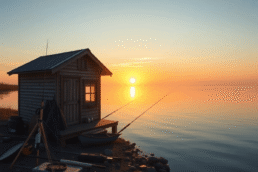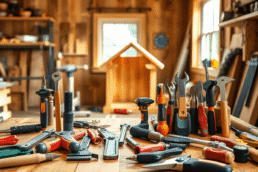Building a community-driven fishing team from the ground up requires a deep understanding of the importance of community involvement. When local stakeholders, ranging from traditional subsistence practitioners to recreational fishers, actively participate in the creation and management of fishing teams, the results can lead to more sustainable and culturally resonant practices.
Overview of the process:
- Community Self-Evaluation: Identifying the needs and goals related to marine resources.
- Pre-Proposal Development: Crafting proposals with input from cultural and traditional experts.
- Management Planning: Engaging stakeholders in developing a management plan.
- Proposal Review and Legal Compliance: Ensuring regulations align with community goals and legal standards.
- Skills Development and Partnerships: Fostering team skills, encouraging youth participation, and collaborating with local organizations.
Benefits of community-driven initiatives:
- Enhanced marine resource management through shared knowledge.
- Preservation of cultural practices related to fishing.
- Increased sustainability due to locally tailored regulatory frameworks.
Understanding these elements is crucial for anyone looking to establish a successful community-driven fishing team. However, it’s essential to remember that creating such a team isn’t merely about fishing; it involves building a lifestyle around it. This could include aspects like finding an ideal residence that aligns with this lifestyle. For example, you might want to consider a rustic tiny house which provides ample space while maintaining a close connection with nature.
Moreover, as you immerse yourself in this community-driven initiative, you may find that certain aesthetic trends could influence your surroundings. The vampire aesthetic trend, characterized by its moody and gothic-inspired look, could be an interesting addition to your home decor as you adapt to this new lifestyle.
Lastly, while engaging in this initiative, you might also come across various home improvement tasks that require specific knowledge. For instance, understanding the difference between sanded vs. unsanded grout can be crucial when undertaking tiling projects. Similarly, knowing the distinction between a sofa and a couch may come in handy when furnishing your new home.
1. Community Self-Evaluation
Diving into any community-driven fishing team starts with a thorough needs assessment. This process is far more than a box to check; it shapes every decision that follows. I typically kick things off by gathering as many voices as possible—everyone from seasoned anglers to local families who rely on the water for food or tradition. Open forums, surveys, and informal discussions all help build a clear picture of what the community values most about its marine resources.
Key steps in evaluating community needs:
- Listening Sessions: Hosting casual meetups on the docks or at the local rec center encourages honest input.
- Data Gathering: Tracking catch records, observing seasonal patterns, and mapping out traditional fishing grounds.
- Community Surveys: Simple questionnaires can reveal what species matter most and highlight concerns over access or sustainability.
The involvement of traditional subsistence practitioners is non-negotiable. These folks—often elders or long-time residents—hold knowledge passed down through generations. I make it a point to invite them into leadership roles, not just advisory ones, so their wisdom directly influences decisions.
“If you want to understand a reef’s health, ask the person who’s fished it for forty years.”
Identifying shared fishery management goals begins once everyone’s stories and concerns are on the table. I help facilitate workshops where we map out overlapping priorities:
- Sustaining key species for future generations
- Maintaining access for both recreational and subsistence fishers
- Preserving cultural practices tied to fishing
Getting consensus on these goals ensures that everyone—regardless of experience or background—feels invested in what comes next. This foundation supports effective collaboration as we move from vision to action.
While we’re working towards these goals, there are moments when we need to step back and embrace the simpler joys of life, much like the character Strega Nona from the classic children’s book. Her idyllic lifestyle serves as a reminder that sometimes, it’s about savoring the moment—whether that’s through enjoying a homemade dump cake, embracing the warmth of cinnamon girl aesthetics during winter, or relishing in the flavors of a silky pumpkin pie. These experiences enrich our lives and strengthen our connection with the community and its resources.
2. Pre-Proposal Development
Laying the groundwork for a successful community-driven fishing team starts with a clear, thoughtfully prepared proposal. This document isn’t just a formality—it’s your team’s first chance to express its vision, articulate its mission, and present a compelling justification for why the community needs this initiative.
Proposal Preparation
Every strong proposal begins with data and heart. Start by gathering evidence that highlights the need for a fishing team: local harvest trends, gaps in youth engagement, or issues in resource stewardship. Clearly outline your objectives—whether it’s cultural preservation, sustainable harvests, or educational outreach. The justification section should address why your specific community is uniquely positioned to support and benefit from this effort.
Consultation With Cultural Experts
No fishing team rooted in tradition can afford to skip this step. I always make it a point to consult with local elders, knowledge keepers, and traditional practitioners. Their input ensures the proposal respects longstanding practices and incorporates indigenous knowledge systems. These consultations might take the form of interviews, roundtable discussions, or even participatory mapping sessions highlighting traditional fishing grounds. When these voices are centered in the process, the end result resonates more deeply within the community.
Gathering Letters of Support
A stack of letters of support demonstrates that your idea isn’t just yours—it’s a shared vision. Reach out to:
- Tribal councils or village leaders
- Local schools
- Conservation groups
- Business owners directly impacted by marine resources
Each letter should reflect real enthusiasm or concern about fisheries management in your area. These endorsements help establish credibility when you approach regulatory agencies or potential funders.
The combined force of strong justification, involvement from cultural experts, and visible stakeholder support creates a rock-solid foundation for what comes next: developing collaborative management strategies with stakeholders across the board.
While planning this initiative, it’s also vital to consider practical aspects such as creating kid- and pet-friendly environments if there are families involved in the project. Moreover, understanding how certain modern conveniences like dishwasher pods might affect the local environment can be crucial.
Additionally, sourcing supplies from local stores like Aldi could not only support local economy but also ensure sustainability. It’s also important to involve local businesses who may be affected by the fishing team’s activities when gathering letters of support.
Lastly, while these efforts are underway, don’t forget about maintaining your own space too—investing in reliable garage door openers can simplify home management tasks during busy times. And if you’re considering incorporating some greenery into your living space as a form of relaxation or inspiration during this intense planning phase, learning how to grow an African milk tree could be beneficial given their low maintenance nature and aesthetic appeal.
3. Management Planning and Stakeholder Collaboration
Establishing a community-driven fishing team means you’re not just managing fish—you’re navigating the currents of diverse interests, traditional knowledge, and regulatory demands. Stakeholder collaboration forms the backbone of any sustainable management plan. I like to start by mapping out all involved parties: local fishers, cultural leaders, conservationists, business owners, and government agencies. This ensures everyone with a stake in the resource has a seat at the table.
Developing a management plan is an iterative process:
- Initial Meetings: Host roundtable discussions to identify resource priorities and potential areas of conflict or synergy.
- Shared Vision: Draft clear objectives for harvest limits, gear types, seasonal closures, or protected areas based on group consensus.
- Adaptive Strategies: Build in regular check-ins—these allow the team to respond to changing ecological data or community needs quickly.
Effective public engagement strategies make or break this process. For What It Takes to Build a Community-Driven Fishing Team From the Ground Up, I always recommend:
- Holding open forums where anyone can voice concerns or ideas
- Using digital surveys for broader input, especially from younger generations
- Setting up informational workshops with local schools or civic organizations
Regulatory recommendations must balance sustainability with accessibility. My go-to approach includes:
- Endorsing science-based catch limits and seasonal closures
- Advocating for transparent reporting requirements
- Proposing co-management agreements that give communities real decision-making power
“When everyone feels heard and respected in crafting the rules, compliance and conservation outcomes improve dramatically.”
A robust management plan grounded in stakeholder collaboration and public engagement creates trust, accountability, and long-term stewardship. This foundation sets the stage for skills development and youth involvement—key ingredients for ensuring both tradition and innovation thrive within the team’s future endeavors.
In addition to these strategies, it’s important to remember that just like managing a fishing team requires careful planning and collaboration, so does maintaining our personal lives—including our homes. For instance, if you’re dealing with pesky lipstick stains on your clothes after a long day of meetings or community forums, there are effective methods to remove them.
And as we transition into different seasons like Halloween, we can find inspiration in Aldi’s Halloween pillows, which offer affordable yet stylish decor options. Speaking of Halloween, if you’re planning a festive gathering and want to impress your guests with a unique dessert, consider trying out this balloon cake recipe.
For those who enjoy experimenting in the kitchen during this season, how about preparing a delightful caramel apple cheesecake? It’s an easy-to-make dessert that everyone with a sweet tooth will enjoy.
Finally, as we embrace the spirit of Halloween through decor and festivities, don’t forget to consider some rich and moody Halloween paint colors for your home—a perfect way to set the mood for this spooky season!
4. Proposal Review, Rule Package Development, and Legal Compliance
Review Process for the Full Proposal by Authorities
Once the proposal for establishing a community-driven fishing team is ready, it undergoes a thorough review process by relevant authorities. This step ensures that all aspects of the proposal align with existing regulations and policies. Key elements such as sustainability measures, community involvement, and resource management strategies are scrutinized to ensure they meet legal standards and contribute positively to marine conservation.
Organizing Public Workshops for Feedback on Regulations
Engaging the community through public workshops is vital at this stage. These workshops provide an open platform for stakeholders, including fishermen, conservationists, and local residents, to review proposed regulations and offer feedback. It’s essential to encourage active participation in these sessions to gather diverse perspectives and insights, which can help refine the rule package to better serve the community’s needs while maintaining ecological balance.
Ensuring Legal Compliance Through Administrative Procedures
Legal compliance is paramount in formalizing the fishing team’s operations. This involves navigating administrative procedures to ensure that all activities comply with local, state, and federal laws. This includes obtaining necessary permits, adhering to environmental guidelines, and implementing monitoring systems to track adherence to regulations. Ensuring legal compliance not only protects the team from potential legal issues but also reinforces its commitment to responsible and sustainable fishing practices.
Creating a comprehensive rule package that incorporates community feedback while adhering to legal standards is crucial for the long-term success of a community-driven fishing team. Through meticulous proposal review by authorities such as those outlined in California’s Office of Administrative Law, active public engagement, and stringent legal compliance measures including following Nevada’s administrative procedure laws, the foundation for sustainable marine resource management is solidified.
In a different context but equally important is the understanding of seasonal changes which can affect various activities including gardening or event planning such as when to plant peonies or when to decorate for Halloween. Such knowledge can be beneficial for community members who are also involved in these activities alongside their fishing endeavors.
5. Skills Development, Youth Participation, and Partnerships with Local Organizations
Building a fishing team that thrives on community involvement means investing in the growth of every member. I’ve seen firsthand how skills training transforms casual anglers into knowledgeable stewards of marine resources. On my teams, we dedicate time to workshops and peer-led sessions on topics like sustainable fishing techniques, gear maintenance, safety protocols, and local fish identification. These hands-on experiences do more than boost confidence—they foster a culture where sharing knowledge is the norm.
1. Skills Development through Training
Skills training is a powerful tool that can turn casual fishermen into responsible guardians of our oceans. By investing time in workshops and peer-led sessions, we can equip our team members with the knowledge they need to fish sustainably and protect marine ecosystems.
2. Youth Participation for Long-Term Success
Engaging young people in fishing programs is crucial for ensuring the future of this practice. Through initiatives like after-school clubs or summer camps, we can teach kids about both the science and tradition behind responsible fishing. Mentorship models where experienced fishers guide children during outings or competitions can further instill values of conservation and teamwork.
3. Partnerships with Local Organizations for Amplified Impact
Collaborating with local organizations such as conservation nonprofits or tackle shops can significantly enhance our efforts. These partnerships can provide us with additional resources, expertise, and opportunities for shared initiatives such as educational events or funding projects. It’s essential to explore how partner organizations can play a pivotal role in amplifying our impact.
When looking at success stories like Team Louie, it’s clear that collaboration is at the heart of their achievements. They built their reputation not just by excelling in tournaments but by actively participating in outreach programs and environmental initiatives alongside community partners. Their commitment to youth engagement and ongoing skills development has set them apart as a model for what community-driven fishing teams can accomplish.
A focus on skills training, youth programs, and strategic partnerships doesn’t just strengthen individual teams—it weaves a stronger fabric for sustainable fisheries management across entire communities.
In this context, it’s also worth noting the potential benefits of integrating diverse community resources such as those offered by platforms like Home Depot, which could provide essential materials for building facilities that support these programs. Additionally, drawing inspiration from design aesthetics like the French country style, could enhance the visual appeal of these community spaces while maintaining functionality.
Moreover, leveraging resources from established platforms like OJJDP can provide valuable insights into effective strategies for youth participation and skills development within our community-driven fishing initiatives.
Conclusion
Sustainable fisheries management thrives on community collaboration. Every successful fishing team I’ve seen—especially those built from the ground up—has one thing in common: people who care deeply about preserving both their local waters and the traditions that define them. When we actively involve everyone, from elders to eager young anglers, our efforts produce more resilient ecosystems and richer cultural legacies.
- Cultural preservation doesn’t happen by accident. It’s the direct result of deliberate choices: listening to traditional knowledge holders, adapting management to changing conditions, and empowering the next generation.
- Teams like Team Louie exemplify what’s possible when passion meets organization. Their journey shows how a blend of experience, education, and partnership can create positive change for both fish stocks and communities.
Supporting local businesses—such as Louie’s Lures—is a practical way to invest in this cycle of stewardship. Each purchase fuels not just individual anglers but an entire network dedicated to responsible practices and vibrant fishing traditions.
Building a community-driven fishing team is about more than catching fish; it’s a commitment to sustaining resources and culture for decades to come. If you’re inspired by What It Takes to Build a Community-Driven Fishing Team From the Ground Up, consider lending your support where it matters most: right at home, with those who share your waters and your vision.
Related Posts
May 19, 2025
How to Keep Fishing Fun When It Becomes a Business
Learn how to keep fishing fun and fulfilling while balancing passion, business…
May 18, 2025
DIY or Hire a Pro? When to Call a Handyman in Lake County
Discover when to DIY or hire a handyman in Lake County for home repairs,…
May 17, 2025
The Challenges of Growing a Business During Inflation—and How We’re Tackling It
Learn practical strategies to manage costs, cash flow, and pricing for…



